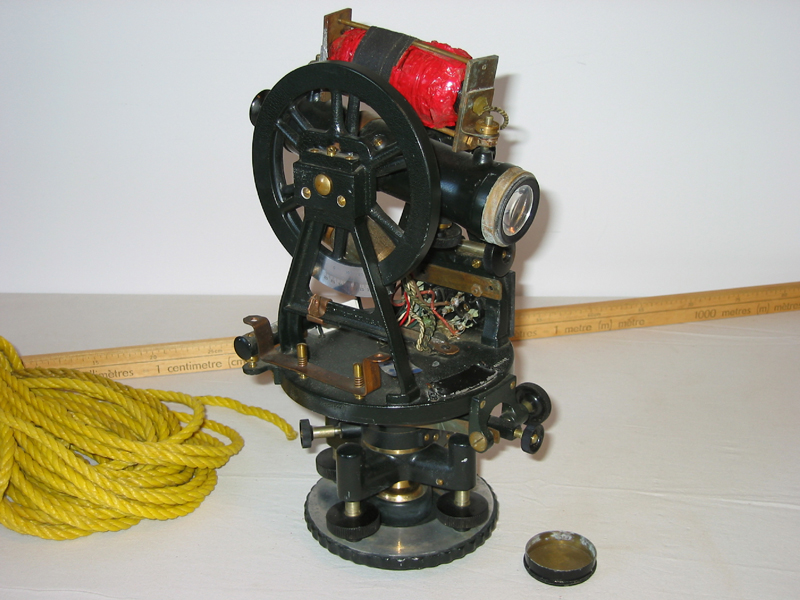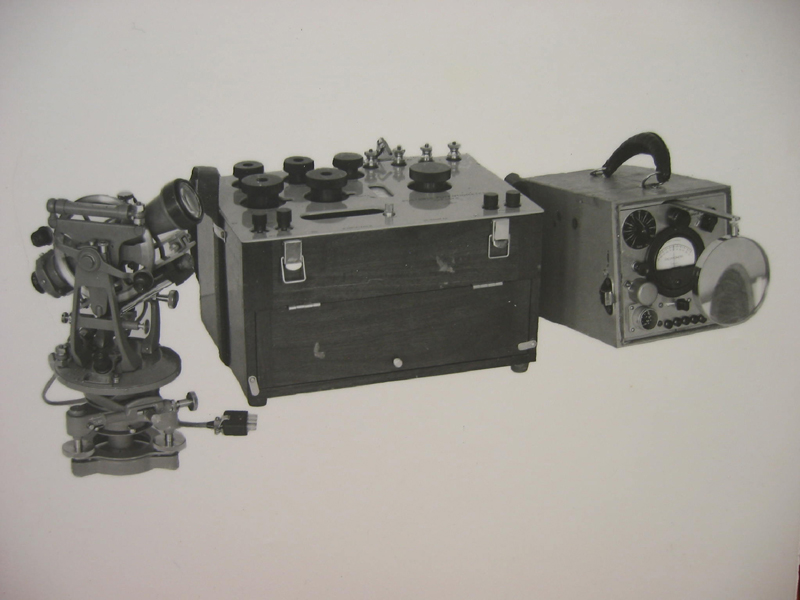Declination-Inclination Fluxgate Magnetometer

- Manufacturer: W.G.L.E. Gurley, Troy, New York, US
- Serial Number: 462042
Background & Usage
This is the prototype fluxgate magnetometer developed by Paul Serson in 1945 for measuring declination and inclination. The hand-wound sensor coil is mounted on a Gurley theodolite. It is believed that this instrument was used at the Baker Lake Magnetic Observatory after its construction. The development of the declination-inclination fluxgate magnetometer greatly simplified the taking of absolute observations, and instruments based on this principle are now found at most major magnetic observatories around the world.
When used with a potentiometer, the instrument could also be used to measure the total field strength. The sensor was aligned in the direction of the magnetic field, and the potentiometer was used to apply a current to the sensor that exactly cancelled the magnetic field. This method worked better in theory than in practice, and was discontinued after the development of the proton precession magnetometer.

This photograph shows a slightly later version of the complete instrument, including a Tinsley potentiometer in the middle, and the magnetometer electronics on the right.